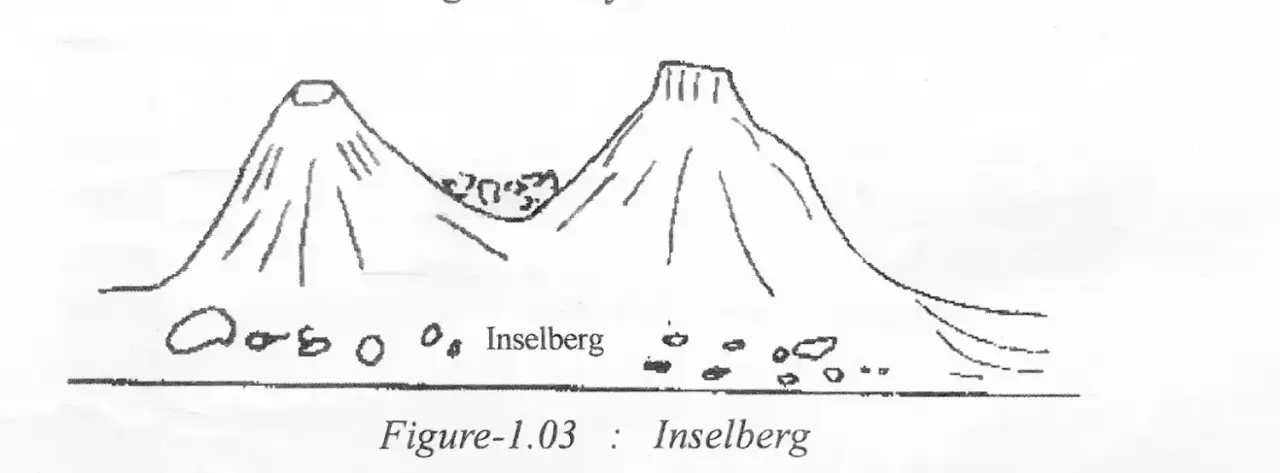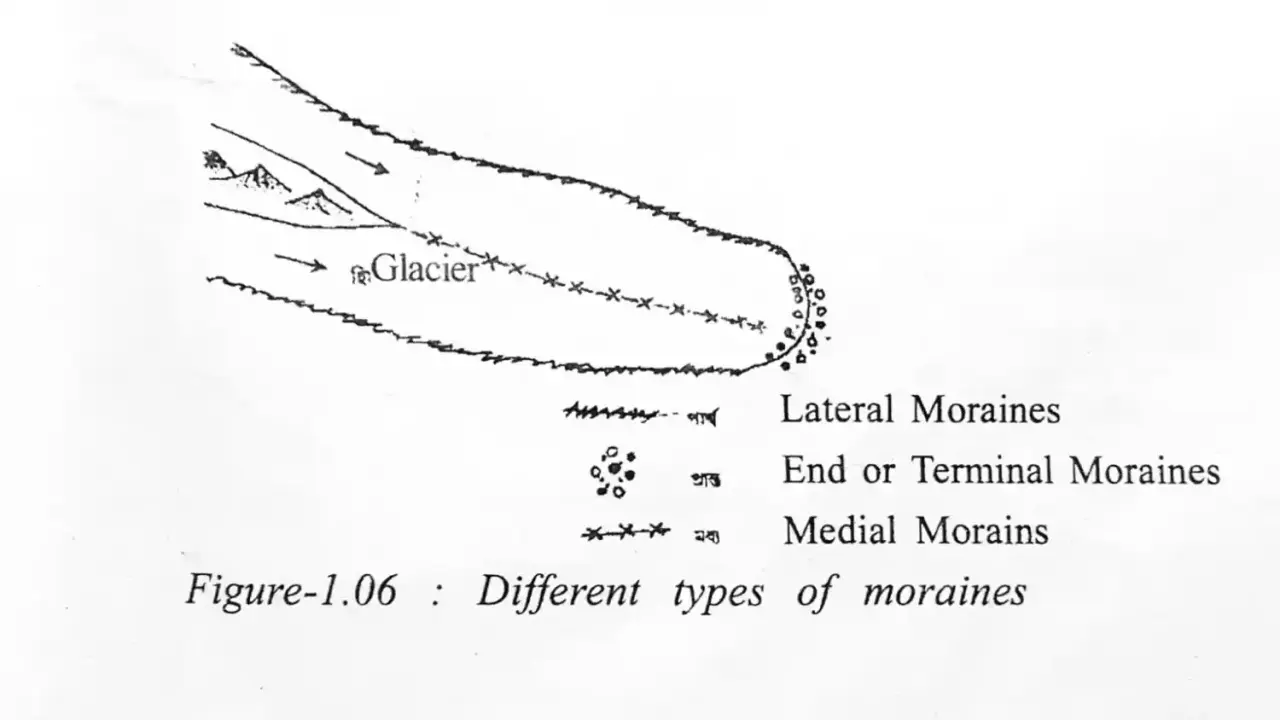Find all question answers from Class 10 MIL Modern Geography Chapter 1: Physical Geography here. Boost your exam preparation without using any guide!


Board:
ASSEB Div I (SEBA)
Class:
X Tenth
Subject:
MIL Modern Geography
Chapter:
1 – Physical Geography
Content:
Questions and Answers
Related Article:
CBSE 10th Results 2025
Note: The following questions and answers are entirely based on Class 10 MIL Geography (SEBA), Chapter 1: Physical Geography, as given in the exercise section on page 13 of the textbook.

Exercise
Page No : 13
Q1. What is landform?
Solution: Landforms are natural features of the Earth's surface, such as mountains, valleys, plateaus, plains, and hills, formed by internal and external forces.
Q2. Define geomorphology.
Solution: Geomorphology is the scientific study of the Earth's landforms and the processes responsible for their formation and development.
Q3. Write down the meaning of the geomorphic processes.
Solution: Geomorphic processes are the natural physical and chemical processes, such as erosion, weathering, and volcanic activity, that shape the Earth's surface and form different landforms.
Q4. Mention the exogenic processes or factors.
Solution: Exogenic processes or factors include weathering, erosion, transportation, and deposition caused by wind, water, glaciers, and waves.
Q5. What do you mean by the term 'deflation'?
Solution: Deflation is the process in which loose particles are lifted and removed from the ground surface by the wind, especially in desert areas.
Q6. What is inselberg? Explain with diagram.
Solution: An inselberg is a steep-sided hill or mountain rising abruptly from a plain, formed due to the erosion of surrounding softer rocks, leaving the hard rock exposed.

(a) The diagram shows two large mountains with steep sides. (fig 1.03)
(b) Over time, weathering and erosion reduce the surrounding softer rock.
(c) Only the hard, resistant rock remains standing alone – this is the Inselberg.
(d) The inselberg appears as a small, isolated hill on the plain, separated from the main mountain.
(e) This feature is common in arid and semi-arid regions where erosion is slow but steady.
Q7. What is oasis? What is its significance.
Solution: An oasis is a fertile area in a desert where underground water reaches the surface, allowing plants and trees to grow. It is significant as it supports human life and agriculture in arid regions.
Q8. What are sand dunes? How are they formed?
Solution: Sand dunes are hills or ridges of sand formed in deserts due to the accumulation of wind-blown sand. They are created when wind loses its speed and drops the sand it carries.
Q9. What is abrasion? What are the features formed due to abrasion?
Solution: Abrasion is the mechanical wearing down of rock surfaces by friction with particles carried by wind, water, or glaciers. Features formed include ventifacts, yardangs, and glacial striations.
Q10. Define attrition.
Solution: Attrition is the process in which particles carried by wind or water hit against each other and break into smaller, smoother pieces.
Q11. What are glaciers? What is the reason for their slow movement?
Solution: Glaciers are large masses of moving ice that flow slowly over land due to gravity. Their slow movement is due to the immense weight and pressure, which causes the ice to deform and slide.
Related Article:
CBSE 12th Results 2025
Q12. What are the different types of glaciers? Write briefly about each of them.
Solution: Glaciers are large, slow-moving masses of ice that form in regions where the accumulation of snow exceeds its melting over many years. They are important agents of erosion, transportation, and deposition in physical geography. Based on their size, location, and nature of movement, glaciers can be classified into several types:
(i) Valley Glaciers: These glaciers are found in high mountain regions. They form in valleys and flow down the slopes, confined between steep rock walls. Valley glaciers resemble rivers of ice and are also called alpine glaciers. They play a major role in shaping U-shaped valleys and other mountainous landforms.
(ii) Continental Glaciers: Also known as ice sheets, these glaciers are massive in size and cover entire continents or large land areas. Unlike valley glaciers, they are not restricted by topography and can flow outward in all directions. Presently, the largest continental glaciers are found in Antarctica and Greenland. They contribute significantly to global sea levels when they melt.
(iii) Piedmont Glaciers: These glaciers form when one or more valley glaciers descend from the mountains and spread out into the surrounding lowlands or plains. They create fan-shaped ice spreads and are found at the base of mountain ranges. A famous example is the Malaspina Glacier in Alaska.
(iv) Cirque Glaciers: Cirque glaciers are small glaciers that form in bowl-shaped depressions or hollows near mountain peaks, known as cirques. These glaciers are typically the source areas for valley glaciers. Over time, the cirques deepen and expand due to the process of glacial erosion.
Each type of glacier plays a unique role in sculpting the Earth's surface and influencing the local and global environment through their movement and melting patterns.
Q13. Draw a figure to show the shape of a glacier valley.
Solution: To be updated soon
Q14. What is a hanging valley?
Solution: A hanging valley is a smaller valley that joins a deeper main valley from a higher elevation, often forming waterfalls, created by the differential erosion of glaciers.
Q15. What are moraines? What are their different types? Show the location of different moraines with the help of a figure.
Solution: Moraines are accumulations of rock debris, soil, and sediments that are transported and deposited by glaciers. As glaciers move, they erode materials from the valley walls and floor and later deposit them when the ice melts. These deposits form ridges or mounds called moraines.
There are several types of moraines, each formed at different parts of a glacier:
(i) Lateral Moraines: These are formed along the sides of a glacier. They consist of debris that falls from valley walls or is pushed aside by the glacier.
(ii) Medial Moraines: These form in the middle of a glacier where two lateral moraines from merging glaciers combine.
(iii) Terminal Moraines: These are found at the end of a glacier and mark the furthest point the glacier has advanced. They consist of materials pushed forward and deposited as the glacier retreated.
(iv) Ground Moraines: These are found beneath the glacier and are formed from materials dragged along the glacier’s base and deposited as a thin, uneven layer.
Moraines are key features for understanding past glacial movements and landscape changes caused by glaciers.
Q16. Based on your general knowledge, state how global warming may have its various effects on glaciers.
Solution: Global warming refers to the gradual increase in Earth's average temperature due to the excessive emission of greenhouse gases like carbon dioxide and methane. One of its major impacts is on glaciers, which are highly sensitive to temperature changes.
Due to rising temperatures, glaciers around the world are melting at a much faster rate than before. This leads to a noticeable reduction in their size and mass. As glaciers melt, the water flows into the oceans, causing sea levels to rise. This threatens coastal regions with flooding, erosion, and displacement of people.
Glaciers also serve as vital sources of freshwater for millions of people. Their melting disrupts the flow of rivers, reduces water availability for drinking and agriculture, and affects hydroelectric power generation. Many areas that depend on seasonal glacial meltwater may face water shortages in the future.
Global warming can also lead to the formation of glacial lakes. These lakes are unstable and can burst suddenly, causing glacial lake outburst floods (GLOFs), which are dangerous and destructive to communities in mountainous regions.
Furthermore, the loss of glaciers affects ecosystems. Many cold-climate plants and animals may not survive, leading to biodiversity loss. The exposed rock beneath melting glaciers absorbs more heat, accelerating global warming through a process called the albedo effect.
In summary, global warming has serious and wide-ranging effects on glaciers, leading to environmental, social, and economic problems. Controlling emissions and protecting the environment is crucial to reduce these impacts.

Post a Comment